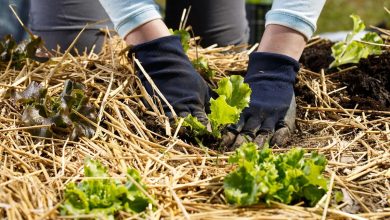Isolepis cernua, rhizomatous plant that looks spectacular in hanging pots

Isolepis cernua (Scirpus cernuus) also known as Junco, Sombrillita, Scirpillo with head down or Planta punk . It belongs to the Cyperaceae family, which is made up of about 75 species of reed-like plants. It is native to the Mediterranean basin.

Maybe you may also be interested: Helichrysum bracteatum, a beautiful plant whose flowers manage to frame any place
Characteristics of the Isolepis cernua
Rhizomatous plant with an elegant bearing that usually reaches a height of 30 cm.
The leaves are green, cylindrical, flexible, thin that arch over the years.
The flowers are white-yellowish, tiny that appear at the tips of the leaves and usually give a unique touch by contrasting with the color of their leaves. It blooms at various times of the year.
Isolepis cernua care

This species is used as a houseplant in hanging pots, as well as near the sea, ponds or lagoons.
It requires a light exposure but without direct sunlight. The temperature should be above 7˚C. Between 7 and 13˚C it will enter a state of rest.
As for the soil, this should be with blond peat, compact earth and mulch. This will help retain moisture. The transplant should be done in the spring.
Now that if you decide to have them in the water, the height of it should not exceed 5 cm and it is better to combine them with plants of the same genus.
Irrigation should be constant so that the soil is always moist. You can submerge the pot in a container with water.
But if it is planted in a dormant period, it should only be watered until the soil dries completely.
Compost should be monthly with a liquid mineral fertilizer in the spring and summer.
Pruning is only to control its growth and thus it can grow vigorously. This work is done in the spring.
It does not present any problem in terms of pests and diseases, but extreme precautions should be taken, since they are toxic if ingested.
They multiply by means of seeds in the spring or early autumn, or, by division at the same time.
Data
It is an ideal species for hydroculture.
It is usually found in a cardboard tube, which gives it a dwarf palm appearance. However, this condemns her to a short life because she does not receive enough air and light.

![Photo of Lawn Pests and Diseases: [Detection, Causes and Solutions]](https://www.complete-gardening.com/wp-content/uploads/2022/08/lawn-pests-and-diseases-detection-causes-and-solutions-390x220.jpg)
![Photo of Green Tea Plant: [Cultivation, Irrigation, Substrate, Pests and Diseases]](https://www.complete-gardening.com/wp-content/uploads/2022/08/green-tea-plant-cultivation-irrigation-substrate-pests-and-diseases-390x220.jpg)
![Photo of What diseases and pests attack the cherry tree? [Identify and Treat]](https://www.complete-gardening.com/wp-content/uploads/2022/08/what-diseases-and-pests-attack-the-cherry-tree-identify-and-treat-390x220.jpg)
